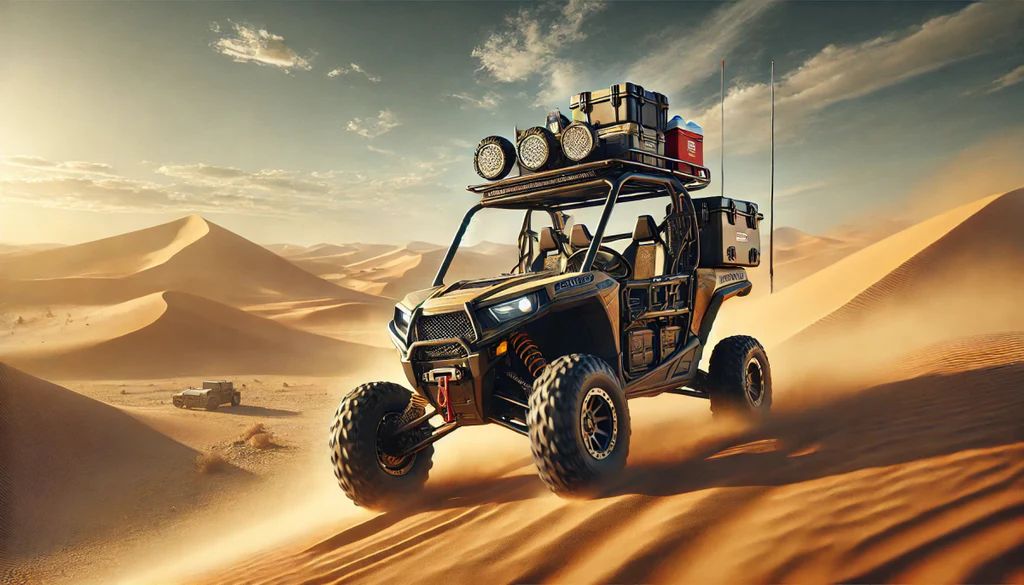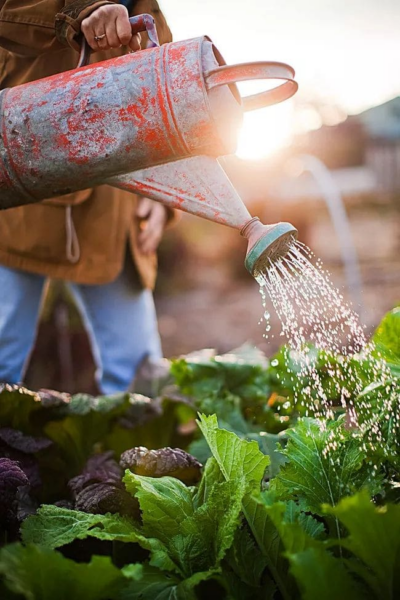The Deserts of West Texas: An In-Depth Adventure Guide for Explorers
The deserts of West Texas are a land of stark beauty, rugged terrain, and unparalleled adventure. As part of the Chihuahuan Desert, one of the largest and most ecologically diverse deserts in North America, West Texas is a haven for those seeking solitude, natural beauty, and outdoor excitement. From the towering peaks of the Guadalupe Mountains to the vast expanses of Big Bend National Park, this region offers an adventure unlike any other.
This comprehensive guide will take you deep into the heart of West Texas deserts, exploring their unique features, must-see destinations, and practical tips for an unforgettable journey.
Why Explore the West Texas Deserts?

West Texas isn’t just a place—it’s an experience. With its dramatic landscapes, clear night skies, and a sense of timelessness, the region appeals to adventurers, photographers, and anyone seeking a break from the ordinary.
Key Features of West Texas Deserts
- Diverse Ecosystems: Despite their arid appearance, these deserts are alive with flora and fauna, including prickly pear cacti, agave, roadrunners, and even black bears.
- Rich Geology: From ancient limestone formations to massive sand dunes, the geological diversity is breathtaking.
- Cultural Significance: Native American rock art, historic mining towns, and Mexican-American influences add a rich cultural layer to the region.
Whether you’re hiking through canyons, stargazing in the dark skies, or rafting down the Rio Grande, the deserts of West Texas promise adventure and discovery.
Top Destinations in the West Texas Deserts

1. Big Bend National Park: A Desert Wonderland
Big Bend National Park is one of the largest and most remote national parks in the U.S., covering over 1,200 square miles. It’s a microcosm of desert, mountain, and river ecosystems.
- Key Highlights:
- Chisos Basin: A lush mountain area with cooler temperatures and abundant wildlife.
- Santa Elena Canyon: Towering limestone walls carved by the Rio Grande.
- Ross Maxwell Scenic Drive: A road trip through some of the park’s most iconic landscapes.
- Must-Try Activities:
- Hiking the South Rim Trail for panoramic desert views.
- Kayaking or rafting along the Rio Grande for a unique perspective of the park.
- Exploring the Fossil Discovery Exhibit to learn about the region’s ancient past.
- Wildlife Spotting:
Big Bend is home to over 1,200 plant species and more than 450 species of birds, making it a hotspot for biodiversity.
2. Guadalupe Mountains National Park: Peaks and Canyons
Guadalupe Mountains National Park is a haven for hikers and nature lovers. With Texas’ four highest peaks and lush canyons, the park offers a stark contrast to the surrounding desert.
- Key Attractions:
- Guadalupe Peak Trail: A challenging hike to the highest point in Texas, offering panoramic views.
- McKittrick Canyon: Known for its vibrant fall foliage and cool streams.
- Salt Basin Dunes: Vast white gypsum sand dunes that seem to stretch endlessly.
- Best Time to Visit:
Autumn is the best time, as cooler temperatures and vibrant colors make the trails even more appealing.
3. Davis Mountains: The Sky Island of Texas
The Davis Mountains rise like an island from the surrounding desert plains, offering cooler temperatures and a refreshing change of pace.
- Key Attractions:
- McDonald Observatory: Famous for its Star Parties, where visitors can gaze at constellations, planets, and galaxies.
- Fort Davis National Historic Site: A well-preserved frontier military post with engaging exhibits.
- Davis Mountains State Park: Perfect for hiking, horseback riding, and birdwatching.
- Pro Tip:
Stay overnight to enjoy some of the clearest skies in North America for stargazing.
4. Monahans Sandhills State Park
Located near Odessa, Monahans Sandhills State Park features over 3,800 acres of shifting sand dunes, some reaching heights of 70 feet.
- Activities:
- Sandboarding or sledding down the dunes.
- Camping under the stars.
- Exploring the unique desert ecosystem.
- Family-Friendly Tip:
Rent sand disks at the park’s visitor center for a fun activity suitable for all ages.
5. Terlingua Ghost Town
This historic mining town near Big Bend is now a quirky community of artists, adventurers, and free spirits. Its adobe ruins and eclectic vibe make it a must-visit.
- What to Do:
- Dine at the famous Starlight Theatre Restaurant & Saloon.
- Attend the annual Chili Cookoff, a celebration of food and music.
- Explore the town’s historic ruins and art galleries.
6. Marfa: A Creative Oasis
Marfa is a small desert town with a big reputation. Known for its art scene and the mysterious Marfa Lights, it’s a unique blend of the old and new.
- Must-See:
- The minimalist art installations of Donald Judd.
- The enigmatic Marfa Lights, visible on clear nights.
- Local boutiques and galleries showcasing contemporary art.
How to Prepare for a Desert Adventure

1. When to Visit
- Spring (March-May): Perfect for wildflowers and mild temperatures.
- Fall (September-November): Cooler weather and fewer crowds.
- Summer (June-August): Be prepared for extreme heat.
2. What to Pack
- Clothing:
- Lightweight, breathable fabrics for daytime.
- Layers for cooler evenings.
- Wide-brimmed hat and sunglasses for sun protection.
- Essentials:
- Plenty of water (1 gallon per person per day).
- High-SPF sunscreen.
- A reliable map or GPS device (cell service is limited).
- Snacks and energy bars for long hikes.
3. Safety Tips
- Stay Hydrated: The desert heat can be deceptive, leading to dehydration quickly.
- Be Weather-Aware: Flash floods can occur in canyons during sudden rainstorms.
- Respect Wildlife: Observe from a distance and avoid feeding animals.
Unique Desert Experiences

Stargazing in West Texas
The deserts of West Texas are some of the darkest in the continental U.S., making them a stargazer’s paradise. The McDonald Observatory and Big Bend National Park are two prime locations for viewing the Milky Way and other celestial phenomena.
River Adventures on the Rio Grande
Rafting or kayaking through the Rio Grande’s canyons is a thrilling way to experience the desert from a different perspective. Tours are available for all skill levels.
Cultural Exploration
From Native American rock art in Hueco Tanks State Park to the ghost towns of Terlingua and Shafter, West Texas is rich in cultural history.
Conclusion
The deserts of West Texas are a realm of natural wonders and rugged beauty. Whether you’re hiking towering peaks, exploring vast sand dunes, or simply soaking in the tranquility of the desert, the region offers something for everyone. With careful planning and an adventurous spirit, you can create memories that will last a lifetime.
Q&A: Exploring the Deserts of West Texas
Q1: What are the best times to visit the deserts of West Texas?
A: The best times to visit are during spring (March-May) and fall (September-November). These seasons offer mild temperatures, making outdoor activities like hiking and camping more enjoyable. Summers can be extremely hot, with temperatures exceeding 100°F (38°C), while winters bring chilly nights.
Q2: What should I pack for a trip to the West Texas deserts?
A: Essential items include:
- Plenty of water (at least 1 gallon per person per day).
- Sunscreen, a wide-brimmed hat, and sunglasses for sun protection.
- Lightweight, breathable clothing for the daytime and layers for cooler evenings.
- A reliable map or GPS device since cell service is limited in many areas.
- Sturdy hiking shoes and a first-aid kit.
Q3: What are the top attractions in West Texas deserts?
A: The must-visit attractions include:
- Big Bend National Park for hiking, scenic drives, and river adventures.
- Guadalupe Mountains National Park for its rugged peaks and canyons.
- Monahans Sandhills State Park for sandboarding and photography.
- Davis Mountains for stargazing at the McDonald Observatory.
- Terlingua Ghost Town and Marfa for a blend of history, art, and culture.
Q4: Is stargazing really that special in West Texas?
A: Absolutely! West Texas boasts some of the darkest skies in the United States. Big Bend National Park and the McDonald Observatory are premier locations for stargazing. On a clear night, you can see the Milky Way, constellations, and even distant galaxies.
Q5: Are there any safety concerns when exploring the deserts?
A: Yes, and being prepared is key:
- Stay hydrated and avoid hiking during the hottest parts of the day.
- Be aware of sudden weather changes, such as flash floods in canyons.
- Keep a safe distance from wildlife and avoid feeding them.
- Inform someone of your travel plans, especially if heading into remote areas.
Q6: Are the deserts family-friendly for travel?
A: Yes, many destinations are family-friendly! Big Bend offers short, accessible trails, while Monahans Sandhills State Park is great for kids who love playing in the sand. Stargazing events and cultural spots like Fort Davis add an educational element to family trips.
Q7: How long should I plan for a West Texas desert trip?
A: To fully experience the major highlights, plan for at least 5-7 days. This gives you enough time to explore Big Bend, Guadalupe Mountains, and other attractions without feeling rushed.
If you have more questions, feel free to ask! The deserts of West Texas are an adventure waiting to happen.





















